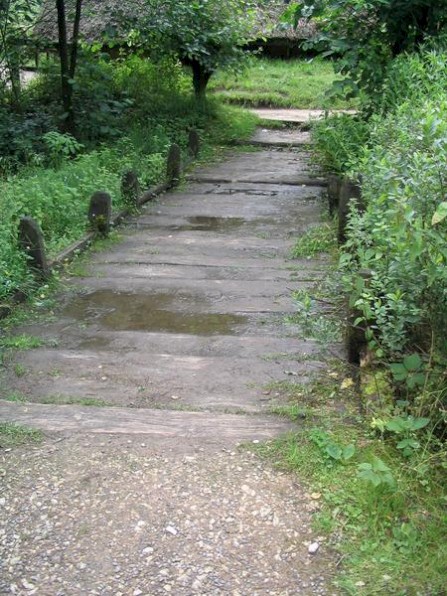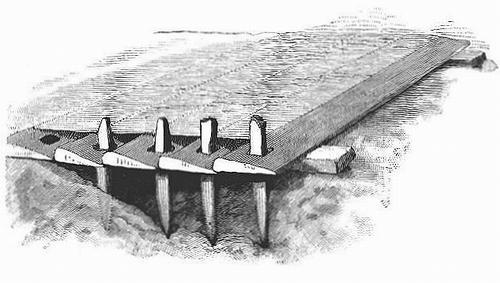"Pontes Longi"
Pontes longi ("long bridges"): Latin expression to describe wooden roads built in bogs. In British English, they are called toghers, in American plankroads or corduroy roads.

The pontes longi are mentioned by the Roman author Tacitus, in his description of a campaign in the year 15.note Prince Germanicus had reached the site of the Teutoburg battlefield, had buried the dead, and ordered Aulus Caecina Severus to retreat with four legions (I Germanica, V Alaudae, XX Valeria Victrix, and XXI Rapax) by way of the pontes longi. There, the Roman army met many Germanic warriors, led by Arminius, but in the end, the legionaries were able to force their way across the bog, and reached the safety of Xanten.
Tacitus says that these wooden road, which he describes as "a narrow causeway between vast marshes", had been made by Lucius Domitius Ahenobarbus, who had conducted a campaign north of the Danube, had reached the Elbe, and had returned to the Rhine through the country of the Cheruscians. This must have happened in 2 or 1 BCE.
The pontes longi were roads of a well-known type, and have been identified on many places in the German and Dutch bogs. The oldest of these date back to the late Neolithicum; the youngest were built in eleventh century. The great peat reclamations of the Late Middle Ages made the construction of these roads unnecessary. Unfortunately, not every excavated plankroad has been dated dendrochronologically, but Roman road-construction in the Osnabrückerland has been ascertained for the year 5 CE (at Dievenmoor, "the thief's bog").

The location of the pontes longi mentioned by Tacitus cannot be established with any certainty. Several scholars have argued for the area between Münster and Coesfeld (30 km west of Münster), others for the area between Münster and the Roman base at Haltern (45 km southwest of Münster), which is perhaps a bit more likely. There is no systematic inventarisation of Roman finds in the Münsterland that may help to establish which of the two possible routes is the site of Caecina's fight in the marsh.